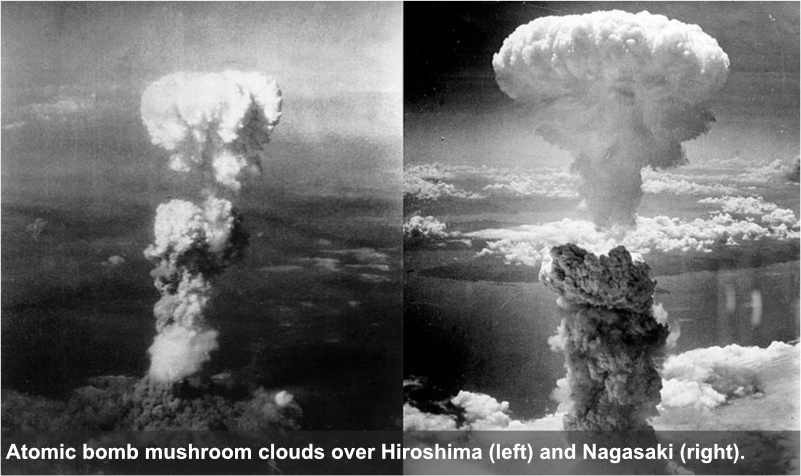The Atom Bomb
Episode #11 of the course Ten turning points of World War II by Patrick Allitt
Germany surrendered unconditionally on May 7, 1945. The war against the Japanese continued, with American amphibious attacks on island bases, each closer to Japan itself, from which bombing planes could make punishing attacks on industry and civilians. Fanatical discipline and determination made the Japanese defenders of every island fight to the death rather than surrender. American war planners feared that the invasion and conquest of Japan itself could take five years and cost a million American lives.
The US had, however, been working for several years on a secret weapon that was now almost ready for testing. Albert Einstein and other physicists had worked out the theory of nuclear fission in the time between the two wars. In 1940, Enrico Fermi, an exiled Italian scientist working at the University of Chicago, set off a controlled nuclear chain reaction. In a coded message to President Roosevelt, he confirmed the result, whose implication was that a much more powerful and explosive reaction could also be achieved. It would be the most powerful bomb ever made.
American and British nuclear scientists, and those from Europe who had managed to escape the Nazis, converged on three sites in the United States to turn the theory into a reality. At Oak Ridge, Tennessee, at Hanford, Washington, and above all, at Los Alamos, New Mexico, they worked feverishly and in secret, well funded by a Congress that had not been told exactly where the money they appropriated was going. This was the Manhattan Project, led by nuclear physicist J. Robert Oppenheimer and overseen by General Leslie Groves.
The death of President Roosevelt just before the war in Europe ended put Harry Truman into the White House. With almost no foreign policy experience up to that time, he was called on to make a series of difficult decisions. None was more difficult than deciding whether to use the nuclear bomb on a Japanese target after word came from Alamogordo, New Mexico, that a test of the new bomb on July 16, 1945, had succeeded.
The argument in favor of using the bomb was that it would finally shock the Japanese into the realization that they were utterly defeated. The strongest argument against it was that it was completely indiscriminate, destroying everything and everyone in the area, including refugee women and children. Some of the scientists urged the president not to use it, or to find a way of making a non-lethal demonstration to senior Japanese observers. But how could such a demonstration be arranged in the midst of war? Truman decided to go ahead.
The US Army Air Force had deliberately avoided certain targets in their conventional raids, so if the secret device should be used, they could measure its destructive power in the knowledge that no other weapons had been used there. A targeting committee led by General Groves chose Hiroshima as the first target. Its safety up to that time had led thousands of Japanese refugees to converge there after losing their homes in conventional bombing raids.
An American B-29 Superfortress, the “Enola Gay,” dropped its bomb over the city on August 6, 1945. It exploded as designed, destroying everything within a one-mile radius and causing severe damage up to four miles away. The death toll was between 80,000 and 130,000 people. Japan still did not surrender, prompting the American forces to use a second bomb, three days later, against the city of Nagasaki, where the destruction was similarly severe.
Only then, finally, did the Japanese government surrender, specifying as its only condition that the Emperor must remain on his throne. In this annihilating fashion, with city-destroying explosions, the war finally ended. Almost at once, a nuclear arms race began between the US and its former ally, the Soviet Union, bequeathing a fearful new hazard to all subsequent generations.
This wraps up the course. Best of luck in your further history studies.
Recommended book
The Making of the Atomic Bomb by Richard Rhodes
Share with friends

